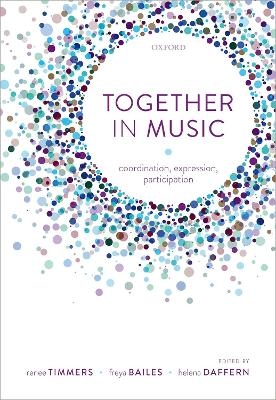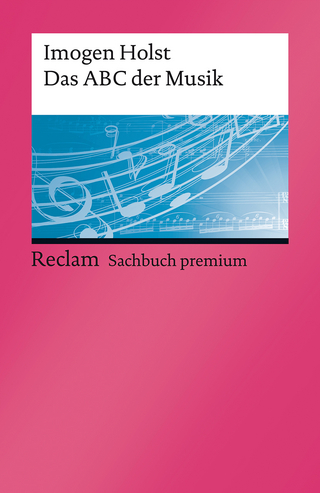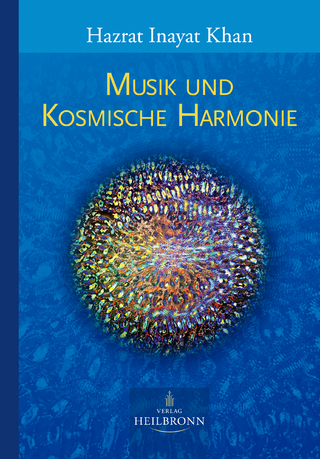
Together in Music
Oxford University Press (Verlag)
978-0-19-886076-1 (ISBN)
Recent years have seen a rise in interest, from a diversity of fields, in the musical ensemble as an exemplary form of creative group behavior. Musical ensembles can be understood and investigated as high functioning small group organizations that have coordinative structures in place to perform under pressure within strict temporal boundaries. Rehearsals and performances exemplify fruitful contexts for emergent creative behaviour, where novel musical interpretations are negotiated and discovered through improvisatory interaction. Furthermore, group music-making can be an emotionally and socially rewarding experience that enables positive outcomes for wellbeing and development.
This book brings together these different perspectives into one coherent volume, offering insight into the musical ensemble from different analytical levels. Part 1 starts from the meso-level, considering ensembles as creative teams and investigating how musical groups interact at a social and organizational level. Part 2 then zooms in to consider musical coordination and interaction at a micro-level, when considering group music-making as forms of joint action. Finally, a macro-level perspective is taken in Part 3, examining the health and wellbeing affordances associated with acoustical, expressive, and emotional joint behavior. Each part contains a balance of review chapters showcasing the most recent developments in each area of research, followed by demonstrative case studies featuring various ensemble practices and processes.
A rich and multidisciplinary reflection on ensemble music practice, this volume will be an insightful read for music students, teachers, academics, and professionals with an interest in the dynamics of group behavior within a musical context.
Renee Timmers is Professor of Psychology of Music at The University of Sheffield, where she directs the Music, Mind, Machine research centre. Her research uses interdisciplinary methods to investigate expression, emotion and wellbeing in and through music with a specific focus on music as a multisensory experience. She served on the editorial board of several journals, including acting as Co-Editor of Empirical Musicology Review and Associate Editor of Psychomusicology: Music, Mind, & Brain. She is currently President of the European Society of the Cognitive Sciences of Music in which capacity she promotes inclusive and climate friendly international knowledge dissemination. Freya Bailes is an Associate Professor in Music Psychology at the University of Leeds. She is a founder and co-director of the 'Music for Healthy Lives Research & Practice network'. Freya has held research positions in Australia, France, and the USA. Her interests include cognitive and social processes in performance, mental representations in musical creativity, cognition and perception of musical structures, musical imagery, and music and wellbeing. Helena Daffern is an Associate Professor in Audio and Music Technology in the AudioLab, Department of Electronic Engineering at the University of York. She received a BA (Hons.) degree in Music, an M.A. degree in Music, and PhD in Music Technology, all from the University of York, UK, before completing postgraduate training as a classical singer at Trinity College of Music, London. Her research utilises interdisciplinary approaches with virtual reality technology to investigate voice science and acoustics, particularly singing performance, vocal pedagogy, choral singing and singing for health and wellbeing.
Part 1: Coordination and ensemble organization
1: Nicola Pennill and Dermot Breslin: Music ensembles as self-organized groups
2: James Saunders: Group behaviors as music
3: David A. Camlin: Organizational dynamics in community ensembles
4: Su Yin Mak, Hiroko Nishida, and Daisuke Yokomori: Agency in ensemble interaction and rehearsal communication
5: Nicola Pennill and Jane W. Davidson: Investigating emergent coordination in small music groups
6: Kathryn King: Ministry of sound: musical mediations in an English parish church
7: Elizabeth Haddon and Catherine Laws: Playful production: collaborative facilitation in a music ensemble context
8: J. Murphy McCaleb: Teaching through ensemble performance
9: Alana Blackburn: The impact of group identity on the social dynamics and sustainability of chamber music ensembles
10: Wendy K. Moy: Come together: An ethnography of the Seattle Men's Chorus family
11: Evgenia Roussou: Working practices of professional piano accompanists outlined through a conceptual framework
12: Jane Ginsborg and Dawn Bennett: Developing familiarity: Rehearsal talk in a newly formed duo
Part 2: Expression, communication and interaction
13: Renee Timmers: Embodiment, process and product in ensemble expression
14: Alexander Refsum Jensenius and Cagri Erdem: Gestures in ensemble performance
15: Cayenna Ponchione-Bailey and Eric F. Clarke: Technologies for investigating large ensemble performance
16: Helena Daffern and Sara D'Amario: Understanding expressive ensemble singing through acoustics
17: Sara D'Amario and Freya Bailes: Ensemble timing and synchronization
18: Emily Payne and Philip Thomas: Ensemble interaction in indeterminate music: a case study of Christian Wolff's exercises
19: Christoph Seibert: Using performance sociograms to investigate inter-performer relationships in music ensembles
20: Ryan Kirkbride: Together in cyberspace: collaborative live coding of music
21: Mary Black: "Crystal clear" or "as clear as mud!" Verbalized Imagery as successful communication between singers and choir directors
22: Christopher Terepin: An historical perspective on ensemble performance: asynchrony in early recordings of the Czech Quartet
23: Laura Bishop, Carlos Cancino-Chacón, and Werner Goebl: Beyond synchronization: body gestures and gaze direction in duo performance
Part 3: Participation, development and wellbeing
24: Gunter Kreutz and Michael Bonshor: Ensembles for wellbeing
25: Naomi Norton: Ensemble musicians' health and wellness
26: Tal-Chen Rabinowitch and Satinder Gill: Musical interaction, social communication and wellbeing
27: Karen Burland: Ensemble participation and personal development
28: Helen J. English: Empowering ensembles: Music and world-building past and present
29: Stuart Wood and Irene Pujol Torras: Ensembles in music therapy
30: Jennifer MacRitchie and Sandra Garrido: Ensemble participation in late adulthood
31: Donald Glowinski, Cecile Levacher, Florian Buchheit, Chiara Malagoli, Benjamin Matuszewski, Simon Schaerlaeken, Chiara Noera, Katie Edwards, Carlo Chiorri, Frédéric Bevilacqua, and Didier Grandjean: Emotional, cognitive and motor development in youth orchestras: a 2-year longitudinal study
32: Andrea Schiavio: Enhanced learning through joint instrumental education
33: James Williams: Collaborative composition and performance in arts and health workshops: How notating in groups enables creative interaction and communication for social wellbeing
34: Daniel Galbreath and Gavin Thatcher: Encountering the singing body: Vocal physicality and interactivity
35: Juliana Moonette Manrique and Angelina Gutiérrez: Ensemble singing for wellbeing and social inclusion of street children: Music-based social action research
36: Renee Timmers, Freya Bailes, and Helena Daffern: Together in music: embodiment, multidimensionality, and musical-social interaction
| Erscheinungsdatum | 05.11.2021 |
|---|---|
| Verlagsort | Oxford |
| Sprache | englisch |
| Maße | 178 x 253 mm |
| Gewicht | 762 g |
| Themenwelt | Kunst / Musik / Theater ► Musik ► Musiktheorie / Musiklehre |
| Geisteswissenschaften ► Psychologie ► Allgemeine Psychologie | |
| Geisteswissenschaften ► Psychologie ► Sozialpsychologie | |
| Geisteswissenschaften ► Psychologie ► Verhaltenstherapie | |
| Sozialwissenschaften | |
| ISBN-10 | 0-19-886076-5 / 0198860765 |
| ISBN-13 | 978-0-19-886076-1 / 9780198860761 |
| Zustand | Neuware |
| Informationen gemäß Produktsicherheitsverordnung (GPSR) | |
| Haben Sie eine Frage zum Produkt? |
aus dem Bereich


